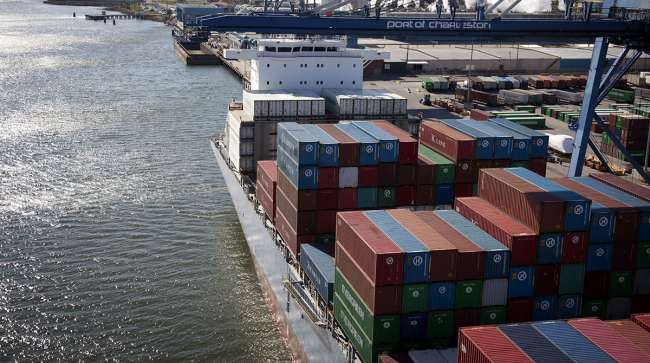US Trade Gap Widened by Less Than Forecast Ahead of Harvey

The U.S. trade deficit widened less than forecast in July as rising energy and aircraft exports helped offset drops in shipments of autos and household goods, Commerce Department data showed Sept. 6.
Highlights of July Trade
Gap increased 0.3% to $43.7 billion (estimated $44.7 billion)
Exports fell 0.3% to $194.4 billion, led by drops in passenger cars, consumer goods.
Imports declined 0.2% to $238.1 billion on crude oil, passenger cars, pharmaceutical preparations.
Merchandise-trade deficit little changed at $63.9 billion; preliminary July figures had shown $65.1 billion last week.
Key Takeaways
The report may represent the clearest picture of international trade before Hurricane Harvey — and potentially Hurricane Irma — distort data from August on.
July’s figures showed drops in both exports and imports of passenger cars as the industry grapples with a sales slowdown, while exports of consumer goods fell to the lowest since May 2016. At the same time, energy shipments rose, with petroleum exports at the highest in more than two years — and at a record on an inflation-adjusted basis. Exports of civilian aircraft, which can be volatile from month to month, jumped by $1.1 billion to $5.4 billion.
The figures indicate trade was on track to contribute to third-quarter growth after net exports added about 0.2 percentage point to the annual pace of expansion in the previous period. While the storm may disrupt some shipments, improving global demand and a weaker dollar have the potential to drive demand for American-made products. Trade and inventories are the two volatile components that feed into the government’s calculation of GDP.
Harvey, which made landfall in Texas in late August, disrupted petroleum transport and refining, which accounts for a significant portion of trade, according to Bloomberg Intelligence. It also temporarily shut the Port of Houston, one of the nation’s busiest.
Apart from the destructive storms, U.S. trade policy is up in the air. President Donald Trump campaigned on a pledge to renegotiate free-trade agreements that he says contribute to America’s deficit.
Since taking office, he pulled out of the Trans-Pacific Partnership and started revamping the North American Free Trade Agreement, which he says hurt U.S. manufacturing.
RELATED: Mexico says it won’t renegotiate NAFTA with President Trump via Twitter
Trump also has threatened to dissolve a trade pact with South Korea and is considering whether to increase tariffs on steel and aluminum.
In July, the U.S.’s goods-trade deficit with China widened by 3% to $33.6 billion, the highest since August 2016, while the $13.5 billion gap with the European Union was the biggest since November. Meanwhile, the deficit with Mexico narrowed by 17% to $4.9 billion.
Other Details
• After eliminating the effects of price fluctuations, which generates the numbers used to calculate GDP, the goods-trade gap widened to $61.6 billion from $60.8 billion.
• Exports of services fell to $65.8 billion from $65.9 billion; imports of $44.1 billion were a record.
• Petroleum deficit narrowed to $3.09 billion, smallest since May 2016; petroleum exports of $10.2 billion were highest since November 2014; inflation-adjusted exports of $10.9 billion were record high.
• Imports of capital goods rose to a record $54.1 billion on computers and accessories.
• Imports of foods, feeds and beverages rose to a record $11.7 billion on meats, oils.
• Exports and imports of goods accounted for about three-fourths of America’s total trade in 2016; the U.S. typically runs a deficit in merchandise trade and a surplus in services.
With assistance by Randy Woods, and Jordan Yadoo




